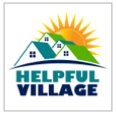Blog archive
November 2022
Solve the Housing Problem Now
11/04/2022
Test How Did UPLIFT Become UPLIFT
11/04/2022
Test Walkable Communities
11/04/2022
October 2022
Restorative Cities
10/31/2022
Restorative Cities
By Deborah GauvreauPosted: 10/31/2022
Dr. Jenny Roe is a pioneer in restorative environments. This topic is exciting because the pandemic exacerbated mental health challenges for many. Dr. Roe recently presented to leaders in Sarasota County thanks to the Sarasota Downton Condominium Association. Attendees learned how we can actively improve our mental health and well-being by focusing on creating "Restorative Cities."
We learned from Dr. Roe's evidence-based research that, done well, our built environments can have powerful positive impacts on mental health and well-being. She shows how spatial forms, color, nature, water, and street design can contribute to or detract from mental health and well-being. Through these frameworks, restorative cities help curtail the rising rates of stress, depression, and mental illness.
We have the opportunity to think and take action using positive design approaches and seven (7) principles: the green, blue, sensory, neighborly, active, playable, and inclusive city to enhance our mental health and well-being. Below is a brief definition of each principle:
- Green City – Presence of greenways, sidewalk trees, parks, and gardens with safe, shaded walking connections for all residents.
- Blue City – Water access to both natural and engineered bodies of water and mitigation of heat-island effect.
- Sensory City – Intentionally leveraging senses, including sight, smell, taste, touch, and ambiance. Make streets and sidewalks interesting, safe places to arouse curiosity; reduce noise pollution.
- Neighborly City – Settings where people develop and maintain social networks. Requires walkability, accessibility, and participatory opportunities.
- Active City – Enabling mobility to promote physical and mental health. Multi-modal streets, walking paths, bike lanes, etc. Mitigate noise and air pollution in high-density areas.
- Playable City – Enjoyable features for people of all ages, including interactive public art installations. Allows for creative expression, quiet retreats, playgrounds, skateboard parks, dog parks, etc.
- Inclusive City – Designing all spaces for access and use by all people. Move away from designing for the presumed dominant group and toward urban design that incorporates and embraces diversity at its core.
Respondents to the post-presentation survey replied that we need the most work on becoming more sensory, inclusive, and neighborly. Other initiatives in our community, such as Age-Friendly Sarasota (AFS) and UPLIFT Florida Network (UPLIFT), are also focusing on our built environment.
Age-Friendly Sarasota (AFS) is a countywide effort in Florida to promote active, engaged, and healthy living. AFS is focused on the World Health Organization's 8 Domains of Livability: Civic Participation and Employment, Communication and Information, Community Support and Health Services, Housing, Outdoor Spaces and Buildings, Respect and Social Inclusion, Social Participation, and Transportation.
UPLIFT Florida Network (UPLIFT) is a statewide network designed to improve the well-being of individuals and communities via a network of villages and organizations supporting them. Villages are community-based organizations connecting for fun, freedom, caring, sharing, supports and interdependence. Villages are communities of belonging and connectivity. They offer a wide array of services powered by neighbors helping neighbors and a network of connectivity that allows older adults to live vibrant, purposeful lives.


